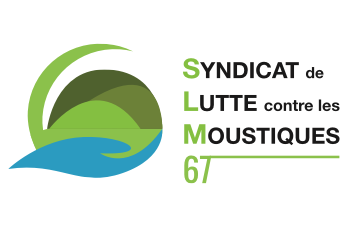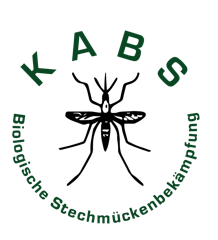The first record of Aedes albopictus in metropolitan France has been made in a village of Orne (Basse-Normandie). A few larvae were collected in October 1999, in the used tire stock of an important tire recycling company, importing in particular from the USA and Japan. Reproduction of the species has taken place in France, and the environmental conditions make the implantation of the species probable.
Publikationen
Publikationen zum Thema Asiatische Tigermücke
First record of Aedes albopictus (Skuse, 1894) in metropolitan France
Schaffner F. and Karch S.
Comptes Rendus de l Académie des Sciences - Series III - Sciences de la Vie 323(4):373-375 · April 2000
Abstract
Spread and establishment of Aedes albopictus in southern Switzerland between 2003 and 2014: an analysis of oviposition data and weather conditions
Flacio E., Engeler L., Tonolla M. and Müller P.
Parasitol Res. 2016 9:304
Abstract
Background
The Asian tiger mosquito, Aedes albopictus, is a highly invasive mosquito species of public health importance. In the wake of its arrival in neighbouring Italy the authorities of the canton of Ticino in southern Switzerland initiated a surveillance programme in 2000 that is still on-going. Here we explored the unique data set, compiled from 2003 to 2014, to analyse the local dynamic of introduction and establishment of Ae. albopictus, its relative density in relation to precipitation and temperature, and its potential distribution at the passage from southern to northern Europe.
Methods
The presence of Ae. albopictus was recorded by ovitraps placed across Ticino. In addition to presence-absence, the relationship between relative egg densities and year, month, temperature and precipitation was analysed by a generalised linear mixed model.
Results
Since its first detection in 2003 at Ticino’s border with Italy Ae. albopictus has continuously spread north across the lower valleys, mainly along the trans-European motorway, E35. Detailed local analysis showed that industrial areas were colonised by the mosquito before residential areas and that, afterwards, the mosquito was more present in residential than in industrial areas. Ae. albopictus appeared sporadically and then became more present in the same places the following years, suggesting gradual establishment of locally reproducing populations that manage to overwinter.
This trend continues as witnessed by both a growing area being infested and increasing egg counts in the ovitraps. There was a clear South-North gradient with more traps being repeatedly positive in the South and fewer eggs laid during periods of intensive precipitation. In the North, the mosquito appeared repeatedly through the years, but never managed to establish, probably because of unfavourable weather conditions and low road traffic.
Conclusions
Given the present results we assume that additional areas may still become infested. While the current study provides good estimates of relative egg densities and shows the local and regional dynamics of Ae. albopictus invasion, additional parameters ought to be measured to make an objective risk assessment for epidemic disease transmission. The likelihood of Ae. albopictus to further spread and increase in densities calls for continued surveillance.
First record of Stegomyia albopicta (Skuse) (Diptera: Culicidae) in Germany
Pluskota B., Storch V., Braunbeck T., Beck M. and Becker N.
J Eu Mosq Control Assoc. 26 (2008), 1-5.
Abstract
With the help of the international used tyre trade, the Asian tiger mosquito, Stegomyia albopicta, has been able to expand its range world-wide. In 1979, the species was recorded in Europe for the first time in Albania, and has since been reported in 14 European countries. In addition to its rapid spread, St. albopicta is of particular interest due to its vector capacity for certain infectious viral diseases. Due to the increasing threat of an introduction of St. albopicta from neighbouring countries, a national monitoring programme was initiated in Germany by KABS (German Mosquito Control Organization) in 2005. In addition to used tyre trading companies, sampling was carried out at container terminals at inland ports along the Rhine, terminals receiving trains from Italy, and rest areas and parking lots along the German highway A5 coming from the south. At the end of September 2007, five eggs from the non-indigenous species St. albopicta were found on oviposition substrate in an ovitrap in the southern section of this major north-south highway. This is the first report of this non-indigenous species in Germany and demonstrates that live adults can be transported over long distances within motor vehicles.
Aedes albopictus breeding in southern Germany
Werner D. and Kampen H.
Parasitol Res. 2015 Mar;114(3):831-4. doi: 10.1007/s00436-014-4244-7
Abstract
Larvae, pupae and eggs of the Asian tiger mosquito Aedes albopictus were found in Freiburg, southern Germany, after submission of an adult mosquito specimen from that area to the ‘Mückenatlas’, a German instrument of passive mosquito surveillance. While previously collected Ae. albopictus in Germany were trapped on, or close to, service stations on motorways, suggesting introduction by vehicles from southern Europe, these new specimens were out of flight distance from the motorway on the one hand and indicate local reproduction on the other. The findings call for a thorough active and passive surveillance in exposed geographic regions such as the relatively warm German Upper Rhine Valley to prevent Ae. albopictus from establishing.
First record of Aedes albopictus establishment in Italy
Dalla Pozza G. and Majori G.
J Am Mosq Control Assoc. 1992 Sep;8(3):318-20.
Abstract
In September 1991, the first breeding populations of Aedes albopictus were discovered in Veneto Region, Italy. Larvae were collected in a wide variety of peridomestic containers and in used tires. Attempts were made to eradicate this species from infested areas. No larvae or adults of Ae. albopictus were found from October 1991 onwards. It is not yet assessed if this was because of the control measures taken or due to the low fall temperatures and the short critical photoperiod prevailing in the area (L:D, 12:45). Since tire casings are believed to be the primary mode of introduction and dispersal of Ae. albopictus, an investigation of tire retreading operations was initiated to determine the source and mode of introduction of Ae. albopictus into Italy.
First record of Aedes (Stegomyia) albopictus in the Netherlands
Scholte E.-J., Jacobs F., Linton Y.-M., Dijkstra E., Fransen J. and Takken W.
J Eu Mosq Control Assoc. 2007 225-9.
Abstract
In the summer of 2005, Aedes (Stegomyia) albopictus (Stegomyia albopicta in Reinert et al., 2004) was found inside and around three different horticultural companies near Aalsmeer in the Netherlands. The species was identified both by morphology and ITS2-DNA sequencing. Although a few adults were also found outdoors, it remains unclear whether these were “escapees” or if indeed the species is reproducing outdoors in or near the site of introduction. This record constitutes the northernmost finding of Ae. albopictus in Europe to date at 52 o N. The introduction is associated with the import of Dracaena plants, colloquially known as ‘lucky bamboo’, from China.
First record of Aedes (Stegomyia) albopictus in Belgium
Schaffner F, Van Bortel W and Coosemans M.
J Am Mosq Control Assoc. 2004 Jun;20(2):201-3.
Abstract
The 1st record of Aedes albopictus in Belgium was made in a village in Oost-Vlaanderen Province. Two preimaginal stages were collected on October 31, 2000, in the used tire stock of a recycling company that imports tires from the USA and Japan. The species has reproduced on site, and local environmental conditions make its establishment possible. Anopheles plumbeus was a common companion species found in tires in high densities.
First record and establishment of the mosquito Aedes albopictus in Spain
Aranda C., Eritja R. and Roiz D.
Med Vet Entomol. 2006 Mar;20(1):150-2.
Abstract
The invasive mosquito Aedes (Stegomyia) albopictus (Skuse) (Diptera: Culicidae) was detected for the first time in Spain, in Sant Cugat del Vallès, a city in the north-east of the country (41 degrees 28′ N, 2 degrees 4′ E, altitude 120 m), during August 2004. A male and one larva were collected in the backyard of a house and in a tree hole, respectively. Dense populations of adults and larvae were found in subsequent surveys, confirming the establishment of the species in the area. This is the first report of the establishment of this species in the Iberian Peninsula.














